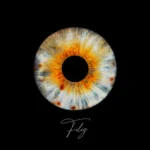Iridology is a holistic health practice that involves examining the iris—the colored part of the eye—to assess an individual’s overall health. Practitioners believe that different parts of the iris correspond to specific organs, systems, and areas of the body. By analyzing patterns, colors, textures, and markings within the iris, they aim to identify potential imbalances or areas of weakness.
How Iridology Works
Iridologists use tools like magnifying glasses, flashlights, or specialized cameras to capture detailed images of the iris. These images are then compared to an iris chart, which divides the iris into zones associated with various body parts. For instance:
- The upper sections of the iris might relate to the brain and head.
- The lower sections may correspond to the legs and feet.
- Internal organs, like the liver or stomach, are mapped to specific areas within the iris.
Iridology focuses on preventive care, aiming to provide insights into potential health concerns before they manifest as serious conditions. It is not a diagnostic tool but rather a method of identifying imbalances or areas requiring attention. Based on findings, practitioners often recommend lifestyle changes, dietary adjustments, or further medical consultation.
Benefits and Applications
Iridology appeals to those seeking a non-invasive, holistic perspective on their health. It is often used in conjunction with other alternative therapies like naturopathy or herbal medicine. Proponents claim it can reveal underlying issues such as stress, toxicity, or poor circulation, allowing individuals to take proactive steps toward better health.
Criticism and Scientific Perspective
Despite its popularity in holistic health circles, iridology faces significant criticism from the medical community. Scientific studies have failed to establish a reliable link between iris characteristics and specific health conditions. Critics argue that iris patterns are largely genetic and do not change in response to health issues.
Iridology is considered pseudoscientific by many, as it lacks empirical evidence to support its claims. However, some practitioners and patients value its role as a complementary approach, emphasizing the importance of self-care and preventive measures.
Final Thoughts
While iridology should not replace conventional medical care, it can provide an additional perspective for those interested in holistic health. For serious or persistent health concerns, consulting a licensed medical professional is essential.
(Images: An iris chart illustrating organ connections and a practitioner examining a patient’s eye.)
 Glass
Glass Canvas
Canvas Gift Card
Gift Card

